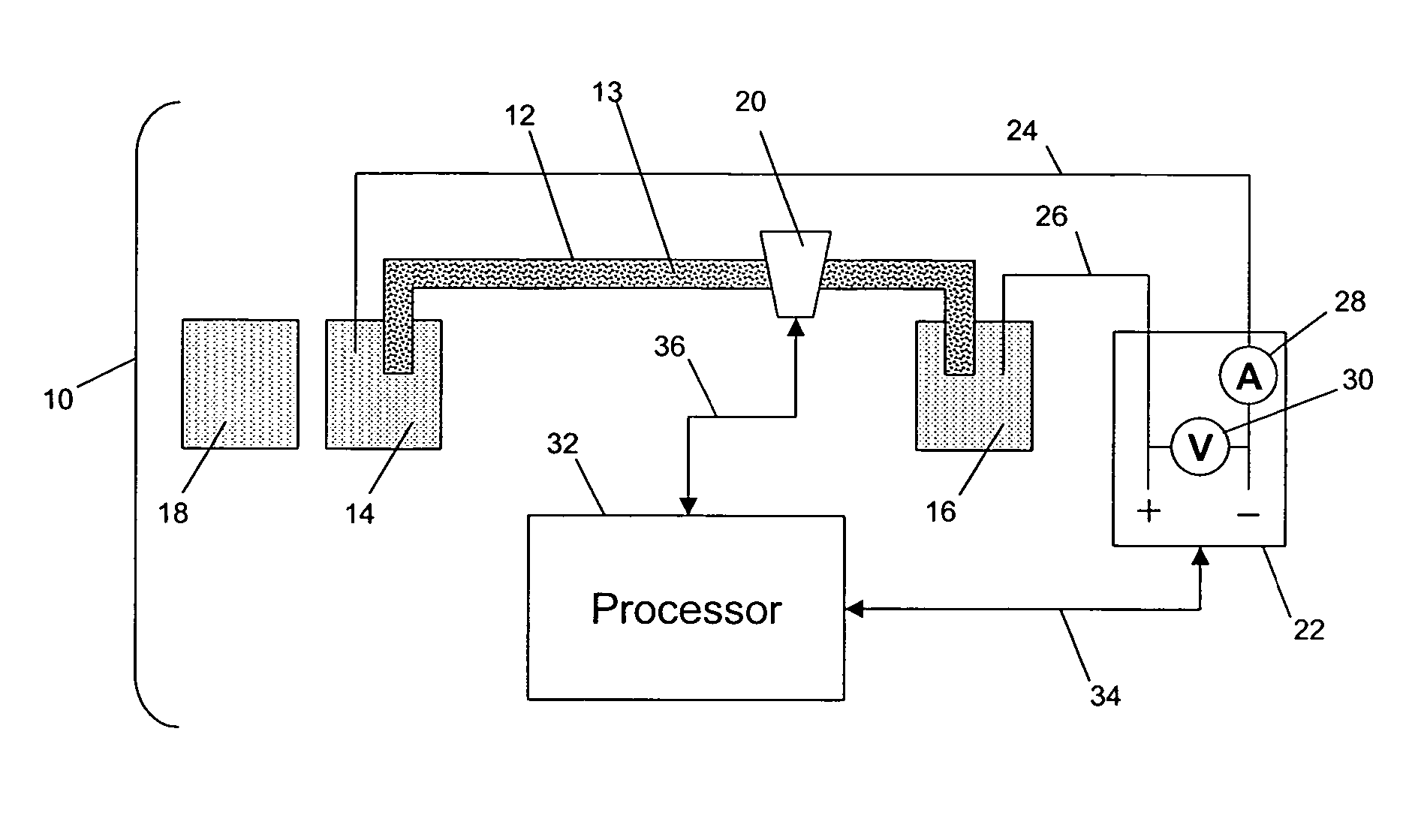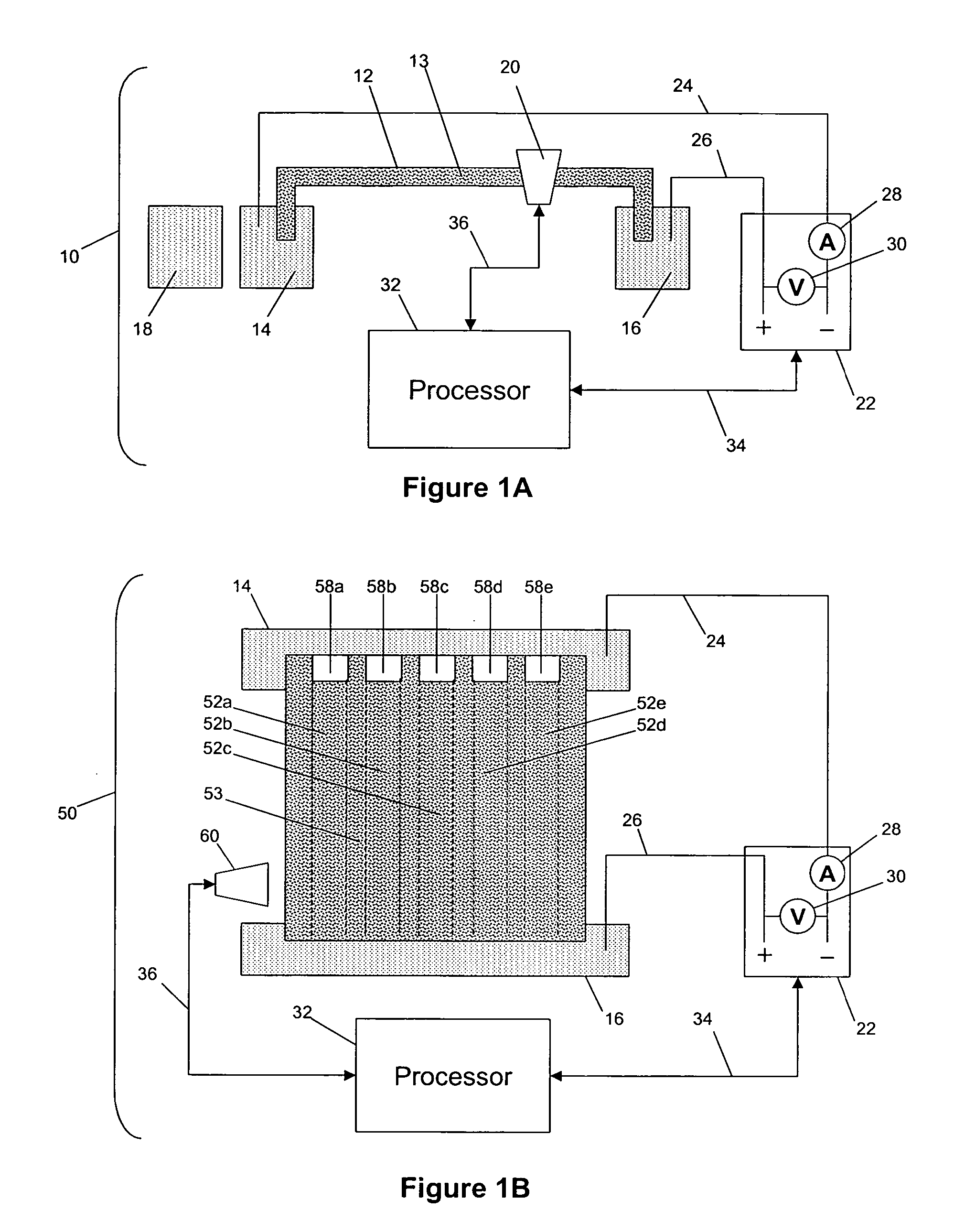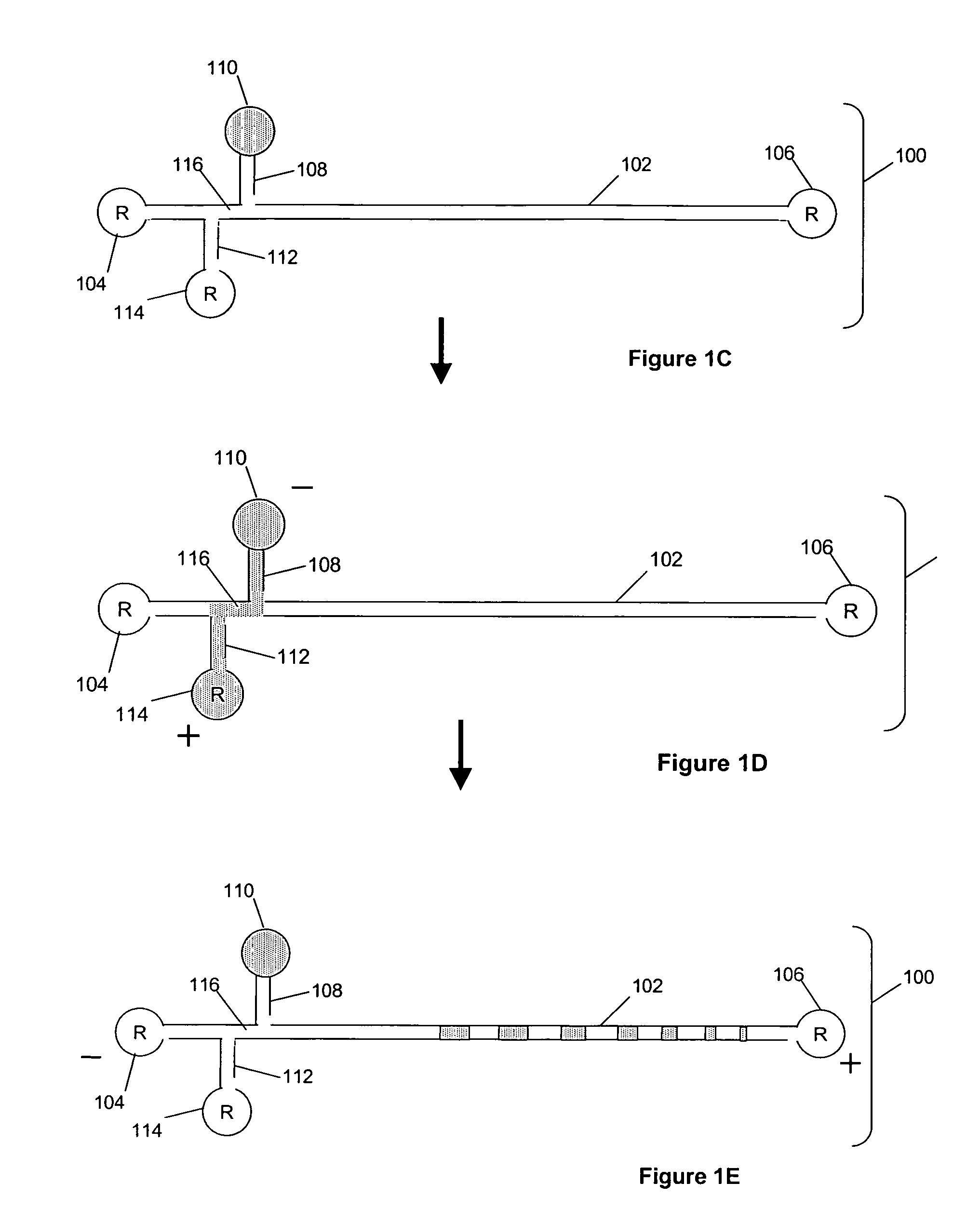Analyte identification in transformed electropherograms
- Summary
- Abstract
- Description
- Claims
- Application Information
AI Technical Summary
Benefits of technology
Problems solved by technology
Method used
Image
Examples
example 1
[0132] This example illustrates the use of integrated current to transform an electropherogram to reduce the variation in the identification of electropherogram peak positions. Ninety samples containing a multiplex of ten molecular tags were analyzed by capillary electrophoresis, wherein the molecular tags were each present in varying amounts. The peaks of the tags in the resulting electropherograms were analyzed according to the methods of the present invention and compared with a standard analysis method employing added standards to calibrate the migration such as described by Williams et al. in U.S. Patent Application No. 2003 / 0170734 A1. For visual clarity in the figures only a section of the electropherograms are presented, however similar conclusions were obtained for all of the analytes as shown below.
[0133] Sample solutions containing the ten molecular tags shown in FIGS. 6A and 6B were prepared in 10 μL volumes, also containing 10 mM N-[tris(hydroxymethyl)methyl]-3-aminopr...
example 2
[0140] This example illustrates the improved capability provided by the present invention of identifying multiple molecular tag analytes in samples analyzed by electrophoresis. Molecular tag analytes were generated in experiments analyzing RNA expression levels in rats using a Rat CYP multiplexed marker panel. Samples of rat liver total RNA isolates were analyzed in four 96-well microtiter plates using the Rat CYP eTag™ (herein referred to as molecular tags) 10-plex assay, which is a multiplexed Invader assay reaction that releases eTag reporter molecules whenever a specified target mRNA is present, e.g. as discussed in Williams et al. U.S. Patent Application No. 2003 / 0170734 A1.
[0141] The multiplexed eTag Invader assay was carried out in accordance with the manufacturer's instructions using a kit obtained from the manufacturer. Briefly, 3 μL of Reaction Mix was dispensed to the wells of a 384-well assay plate, and then 2 μL of Enzyme Mix was added. Samples of 5 μL of total rat liv...
PUM
| Property | Measurement | Unit |
|---|---|---|
| Fraction | aaaaa | aaaaa |
| Fraction | aaaaa | aaaaa |
| Fraction | aaaaa | aaaaa |
Abstract
Description
Claims
Application Information
 Login to View More
Login to View More - Generate Ideas
- Intellectual Property
- Life Sciences
- Materials
- Tech Scout
- Unparalleled Data Quality
- Higher Quality Content
- 60% Fewer Hallucinations
Browse by: Latest US Patents, China's latest patents, Technical Efficacy Thesaurus, Application Domain, Technology Topic, Popular Technical Reports.
© 2025 PatSnap. All rights reserved.Legal|Privacy policy|Modern Slavery Act Transparency Statement|Sitemap|About US| Contact US: help@patsnap.com



